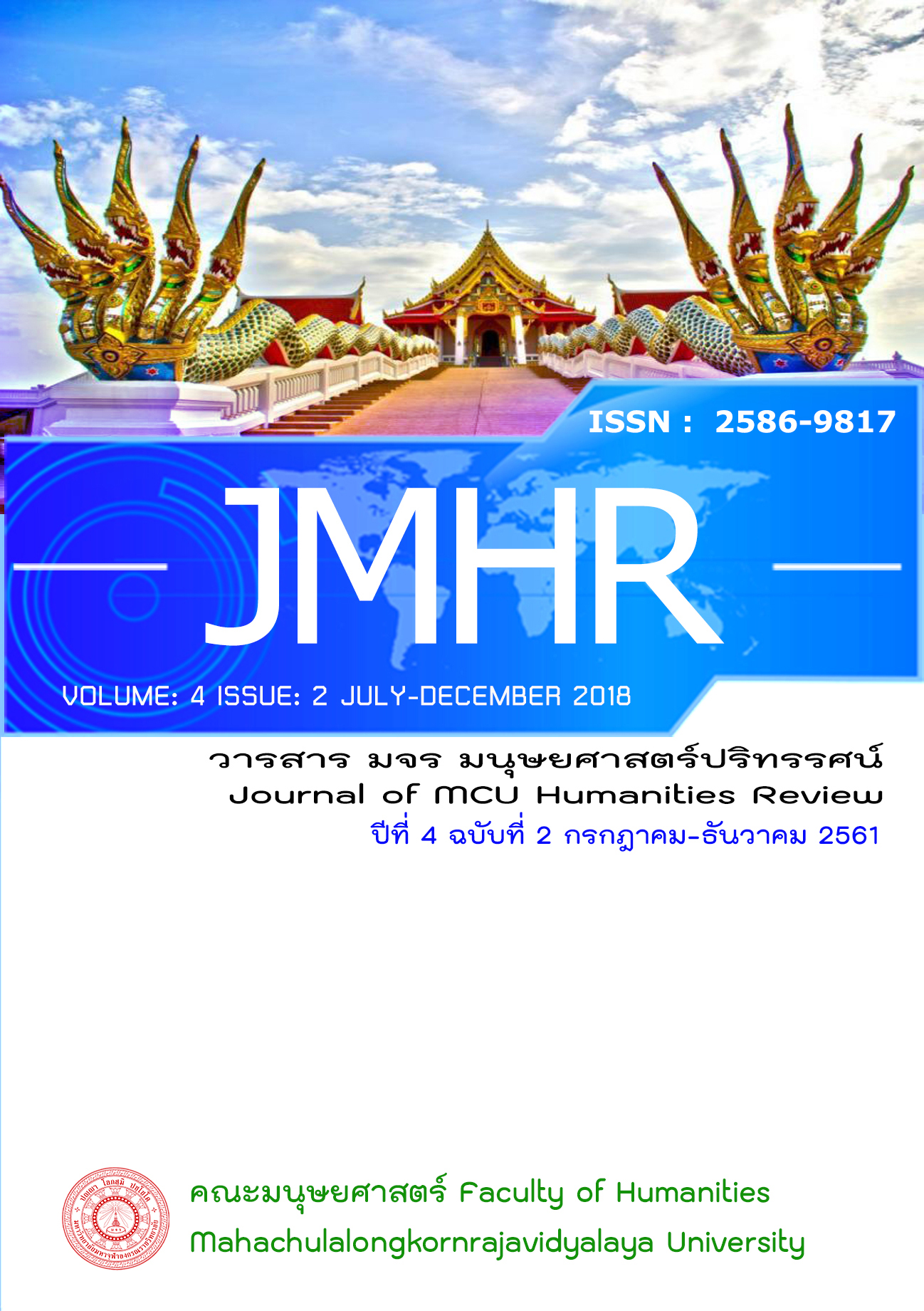การพัฒนาการมีส่วนร่วมของกลุ่มออมทรัพย์เพื่อการผลิตบ้านหินตั้งอย่างยั่งยืน ตำบลชัยเกษม อำเภอเมือง จังหวัดประจวบคีรีขันธ์
คำสำคัญ:
กลุ่มออมทรัพย์เพื่อการผลิต, การพัฒนาการมีส่วนร่วม, กองทุนสัจจะ, บ้านหินตั้งบทคัดย่อ
การวิจัยเรื่อง การพัฒนาการมีส่วนร่วมของกลุ่มออมทรัพย์เพื่อการผลิตบ้านหินตั้ง ตำบลชัยเกษม อำเภอบางสะพาน จังหวัดประจวบคีรีขันธ์ วัตถุประสงค์เพื่อ (1) ศึกษาระดับการพัฒนาการมีส่วนร่วมของกลุ่มออมทรัพย์เพื่อการผลิตบ้านหินตั้ง (2) พัฒนากระบวนการมีส่วนร่วมของกลุ่มออมทรัพย์เพื่อการผลิตบ้านหินตั้ง (3) การได้มาซึ่งนโยบายการพัฒนาการมีส่วนร่วมของคณะผู้บริหารกลุ่มออมทรัพย์เพื่อการผลิตบ้านหินตั้ง ใช้วิธีการวิจัยแบบผสานวิธี (Mixed methodology) โดยวิธีการวิจัยเชิงคุณภาพใช้การวิจัยเอกสาร สัมภาษณ์จากผู้เชี่ยวชาญ ผู้นำชุมชน คณะกรรมการ รวมจำนวนผู้ให้ข้อมูลทั้งสิ้น 75 คน ร่วมกับการวิจัยเชิงปริมาณ โดยทอดแบบสัมภาษณ์กลุ่มตัวอย่างผู้เป็นสมาชิกกลุ่มออมทรัพย์ จำนวน 120 ชุด (ครัวเรือน) คิดเป็นร้อยละ 96
พบว่า (1) ระดับการพัฒนาการมีส่วนร่วมกลุ่มออมทรัพย์ในภาพรวม มีค่าระดับคะแนน “มากที่สุด” คือ ด้านการมีส่วนร่วมในการประเมินผล นอกจากนั้นมีค่าคะแนนอยู่ที่ระดับ “มาก” ในทุกด้านคือ การมีส่วนร่วมในการปฏิบัติงานโครงการ การมีส่วนร่วมในการตัดสินใจ และการมีส่วนร่วมได้รับผลประโยชน์ ตามลำดับ (2-3) การพัฒนาการมีส่วนร่วมของกลุ่มออมทรัพย์ พบว่า 1) การมีส่วนร่วมการตัดสินใจ มีเงื่อนไขที่อายุสมาชิกเป็นอุปสรรคที่จะสมัครเป็นสมาชิกกองทุนสวัสดิการ ภาระความเสี่ยงการเป็นผู้ค้ำประกัน ได้นโยบายแนวทางลดความเสี่ยงด้วยการประกันชีวิตหมู่ และการเปิดกว้างแก่สมาชิกที่อายุเกินให้สามารถสมัครกองทุนสวัสดิการ 2) การมีส่วนร่วมปฏิบัติโครงการต้องการให้จัดสรรกองทุนเพื่อสร้างอาชีพ การใช้วัตถุดิบในพื้นที่ร่วมภูมิปัญญาชุมชน การจัดทำบัญชีครัวเรือน ได้นโยบายแนวปฏิบัติจัดทำรายงานผลทุก 3 เดือนติดไว้ที่บอร์ดของที่ทำการกลุ่มออมทรัพย์ และการอบรมบัญชีครัวเรือนจากผู้เชี่ยวชาญหน่วยงานพัฒนาอำเภอ 3) การมีส่วนร่วมในการรับผลประโยชน์ การเข้าถึงสิทธิในกองทุนค่ารักษาพยาบาล การเพิ่มความหลากหลายทางพืชพันธุ์และสัตว์เลี้ยง ได้นโยบายแนวทางจัดทำคู่มือสวัสดิการเพื่อการเข้าถึงสิทธิสวัสดิการ และการจัดสรรกองทุน อุดหนุนกลุ่มอาชีพเช่น การทำปุ๋ย 4) การมีส่วนร่วมประเมินผล มีความต้องการรู้ผลการดำเนินงาน การจัดสรรผลกำไรเพื่อการอนุรักษ์ธรรมชาติและสิ่งแวดล้อม ได้นโยบายแนวทางการสร้างภาคีเครือข่ายเพื่อแลกเปลี่ยนความรู้ และแนวปฏิบัติรณรงค์รักษาสภาพแวดล้อมปรับปรุงภูมิทัศน์ในวันสำคัญหลักเช่น วันพ่อ
เอกสารอ้างอิง
ธนากร สังเขป. (2556). การพัฒนาที่ยั่งยืน. กรุงเทพมหานคร : สำนักพิมพ์แห่งจุฬาลงกรณ์ มหาวิทยาลัย.
นวพร ประสมทอง. (2558). การวิจัยเชิงปฏิบัติการแบบมีส่วนร่วมเพื่อพัฒนาศักยภาพการบริหารจัดการชุมชนเข้มแข็งของกลุ่มออมทรัพย์เพื่อการผลิตตำบลท่าโพ จังหวัดอุทัยธานี. วิทยาลัยพาณิชยศาสตร์บูรพาปริทัศน์ : ปีที่ 10 ฉบับที่ 2 กรกฎาคม – ธันวาคม 2558.
บวรศักดิ์ อุวรรณโณ และคณะ. (2554). การมีส่วนร่วมของประชาชนในกระบวนการนโยบายสาธารณะ. พิมพ์ครั้งที่ 2. กรุงเทพมหานคร : บริษัท เอ.พี.กราฟฟิค ดีไซน์และการพิมพ์ จำกัด.
พัชรินทร์ แท่นแก้ว. (2554). การพัฒนาความเข้มแข็งของกลุ่มออมทรัพย์เพื่อการผลิตบ้านจีกแดก ตำบลจีกแดก อำเภอพนมดงรัก จังหวัดสุรินทร์. รายงานการศึกษาอิสระ ปริญญารัฐประศาสนศาสตรมหาบัณฑิต มหาวิทยาลัยขอนแก่น.
ไพรัตน์ เตชะรินทร์. (2527). นโยบายและกลวิธีการมีส่วนร่วมของชุมชนในยุทธศาสตร์การพัฒนาปัจจุบัน. กรุงเทพมหานคร : ศักดิ์โสภาการพิมพ์.
ยุวัฒน์ วุฒิเมธี. (2559). ประวัติความเป็นมาของกลุ่มออมทรัพย์เพื่อการผลิต สืบค้น 21พฤษภาคม 2559 จาก https://www.thailandff.org/th/reports/detail.php?ID=224 &SEC TION_ID=12.
สำนักงานพัฒนาทุนและองค์กรการเงินชุมชน. (2552). คู่มือการดำเนินงานกลุ่มออมทรัพย์เพื่อการผลิต. กรุงเทพมหานคร : กรมการพัฒนาชุมชน
อำมาลา ศักดี. (2556). แนวทางการพัฒนากลุ่มออมทรัพย์เพื่อการผลิต จังหวัดอุตรดิตถ์. วิทยา นิพนธ์ ปริญญารัฐประศาสนศาสตร์มหาบัณฑิต สถาบันราชภัฏนครสวรรค์.






